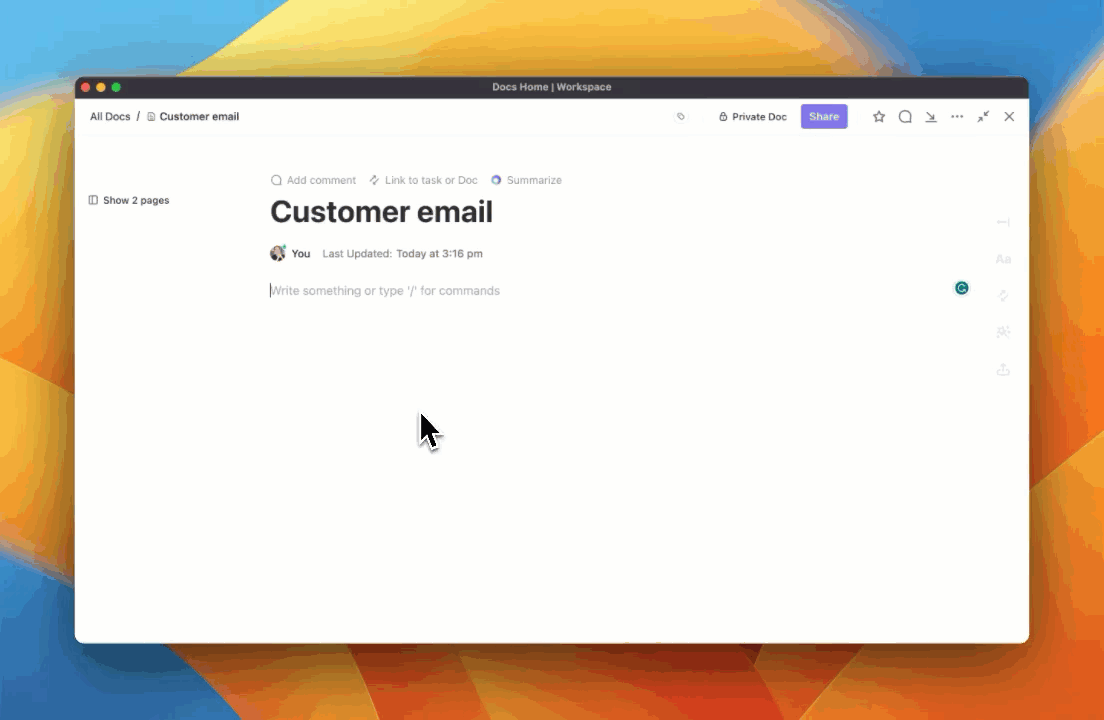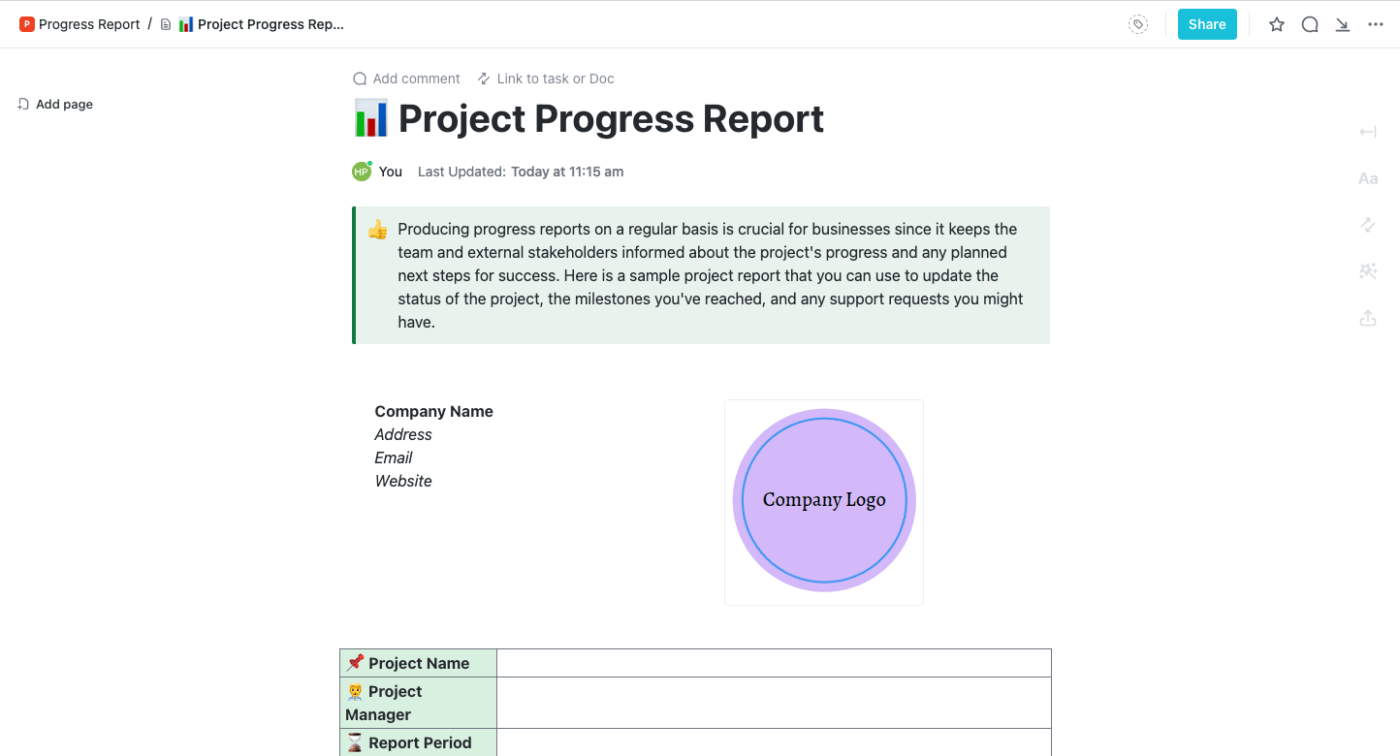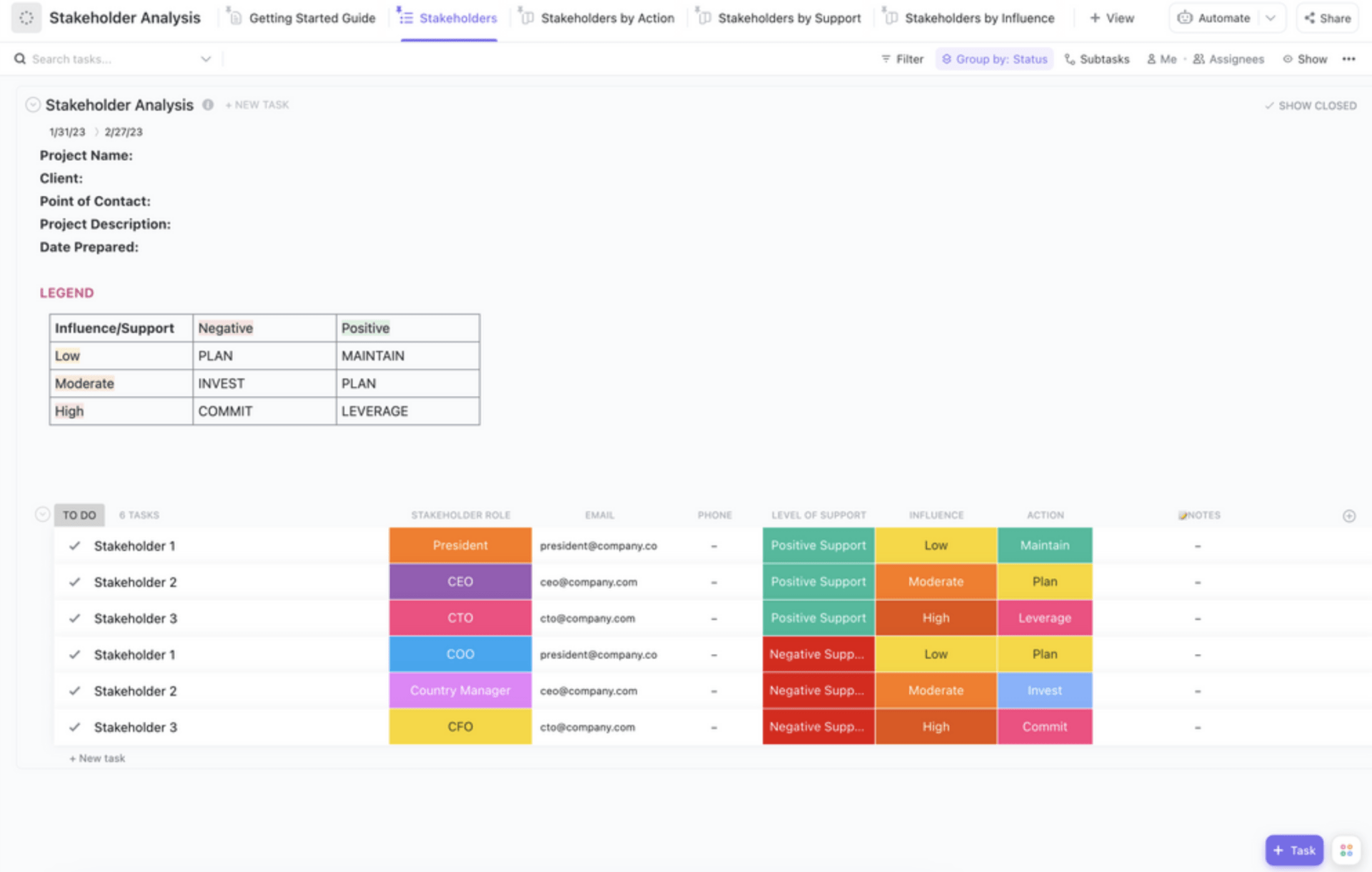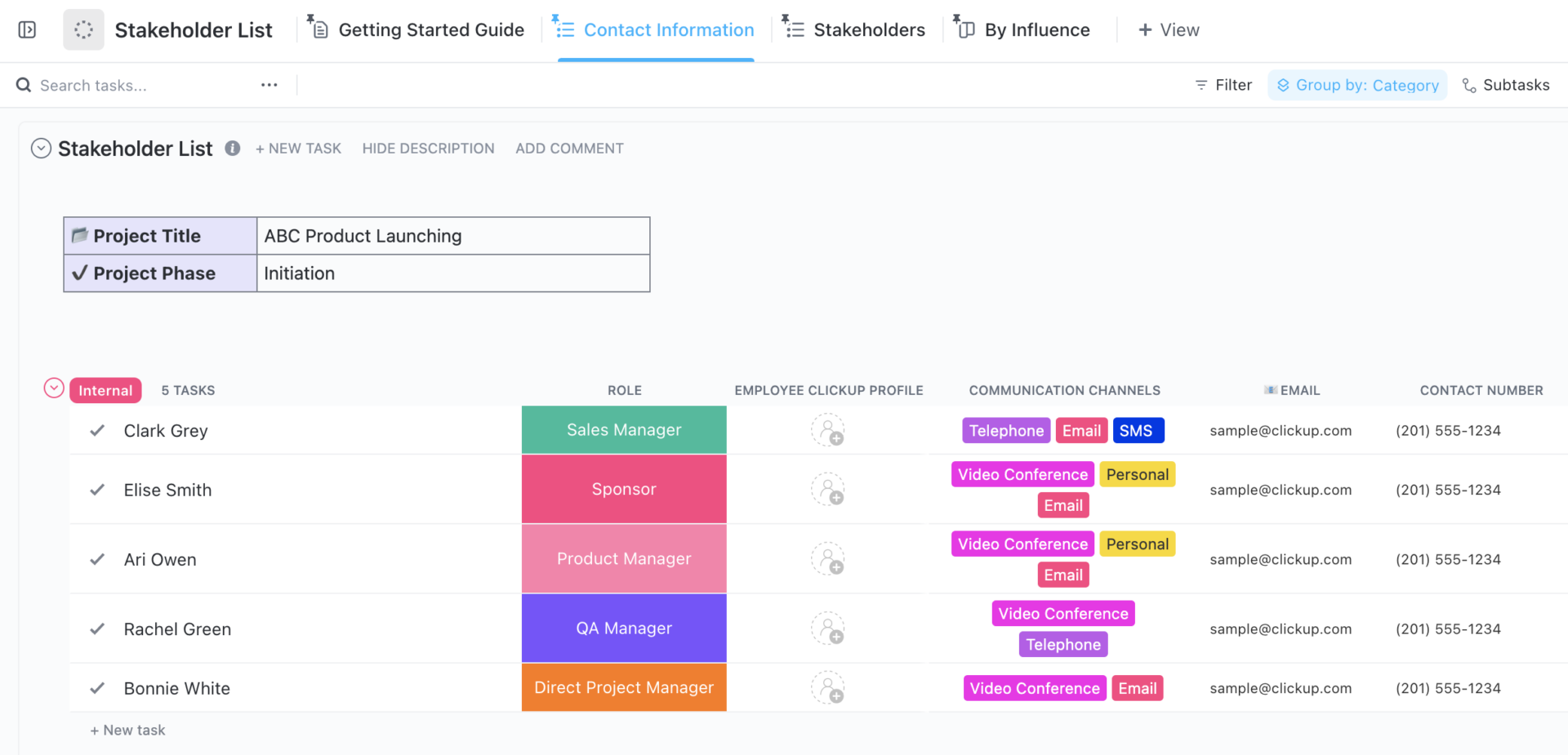

A well-defined plan executed with a skilled team should be the primary area of focus when working for a successful project execution. One area of project governance that requires special attention is stakeholder communication.
That’s because stakeholders have a vested interest in a project’s success. Building trust, managing their expectations, and ensuring everyone is aligned can differentiate success and failure.
As project managers, you know that executing a project is never smooth sailing. Your client may shift goalposts, and unexpected hurdles spring up, impacting delivery deadlines.
An effective stakeholder communication plan helps you mitigate risks better and give your stakeholders a clear picture of the ground realities. This, in turn, builds trust (the currency of collaboration) with your stakeholders for better decision-making.
This blog will help you master the complexities of stakeholder management with expert insights and suggestions on the tools and strategies you employ to guarantee project success.
Why is Stakeholder Communication Important?
Stakeholders, ranging from investors to your team’s junior members, are pivotal to a project’s success. Clear, concise, and consistent communication with them is essential. Here’s why stakeholder communication holds prime importance in a project’s success:
- Clarifies expectations: Effective stakeholder communication will ensure everyone understands the project’s goals and expectations. You must communicate strategically with stakeholders while maintaining a delicate balance between expectations, budget, and timelines.
- Improves ideation and risk mitigation: Stakeholder communication is an opportunity to dip into a diverse pool of expertise, real-world experience, and ideas. This collective pooling of minds will provide valuable insights to improve your processes and project outcomes and detect potential hurdles and roadblocks.
- Builds trust via transparency and accountability: Trust between stakeholders is vital and can only be built on the foundation of transparency and accountability. The key to doing so lies in open communication. When you share information and take accountability for decisions, you instill confidence among your stakeholders. This trust is crucial for long-term collaboration and will help when the project faces challenges.
How Do You Identify Stakeholders?
So far, we’ve been using the term ‘stakeholder’ broadly. To better understand how to identify them, we need to explore the concept of a stakeholder more deeply.
A stakeholder is any individual, group, or organization that can affect, be affected by, or perceive itself to be affected by a project’s decision, activity, or outcome. They can be broadly classified into:
- Internal stakeholders: These include your core project team, top management, Human Resources, the folks over at the accounts department, and other members integral to the smooth running of the project within the organization
- External stakeholders: Investors, shareholders, and your clients (or, depending on the nature of the project, the end customers), to name a few, are your external stakeholders
Of course, merely identifying these important stakeholders does not equate to effective stakeholder communication. You must also understand each individual’s influence and interest in your project’s outcome and their possible impact on its successful or unsuccessful conclusion.
Here is how to identify these key elements for your stakeholder communication objectives:
Conduct a stakeholder analysis
The first step is to conduct a stakeholder analysis to map out everyone associated with the project. One way to do so is by mapping out each stakeholder based on their relevance, interest, and influence on your project.
Take a new ride-sharing app, for example. The drivers, the end customers, the app development team, the investors, and the local authorities are identified as stakeholders
Analyzing them would reveal that your drivers and customers have high interest and influence due to their direct usage of the service. The local authorities have strong influence but variable interest depending on policy priorities, while your internal development team has high interest and relevance but little influence over the project.
Categorize stakeholder groups
Once you’ve compiled a list of all the stakeholders, the next step is identifying which are key. These are the people with a significant interest in seeing you meet your project’s objectives. Splitting them into groups is vital because you must tailor your communication methods and channels based on each group.
Continuing with the same example, we can categorize them into the following groups:
- Primary stakeholders: Drivers and customers, as their satisfaction directly impacts the business.
- Secondary stakeholders: Investors and local authorities.
- Tertiary stakeholders: Internal development team that is highly relevant but holds little influence over the project’s outcome.
This categorization will help decide the frequency of communication required and by what means. For example, in-app notifications for drivers and end customers, reports for investors, in-person meetings with local authorities and your internal team, followed by regular email updates to keep everyone on the same page.
Importance of Stakeholder Communication
By now, we should be on the same page regarding the criticality of stakeholder relationships. The entire point of identifying the main stakeholders is that the levels of stakeholder engagement vary between different stakeholder groups.
While some may expect regular updates, others may only be interested if and when a project reaches a specific milestone or if there has been a significant change per the original project plan.
Individual project stakeholders may even prefer different communication channels ranging from face-to-face meetings to online meetings or a simple email update.
Communication with stakeholders is a dynamic process, and the above information will help you as project managers devise specifically designed stakeholder communication plans to meet individual stakeholder needs.
How to Create a Stakeholder Communication Plan?
On the surface, creating a stakeholder communication plan may seem daunting. That said, if you break it down into simple steps, it won’t be. Let’s see how to do just that.
Step 1: Identify and group key stakeholders
We have already touched on the importance of identifying key stakeholders. When creating a stakeholder communication plan, you can use two traditional methods to identify and group your stakeholders. They are:
The Stakeholder Analysis Matrix
A stakeholder analysis matrix is a tried and tested method that works great at categorizing your stakeholders based on the level of interest and the influence each stakeholder holds over your project. It’s a two-dimensional grid with four quadrants where:
- The X-axis (horizontal axis) represents the interest of the stakeholder
- The Y-axis (vertical axis) represents the influence of the power the stakeholder has over your project
You group your stakeholders as follows:
- High influence, high interest: These stakeholders have the most power and a strong interest in your projects. Developing better relationships with this group is important
- High influence, low interest: The folks here have the power to impact the project; they might not have a strong interest. It’s still essential to engage with them
- Low influence, high interest: These stakeholders are interested in the project but have little power to change outcomes. They can be kept informed, and engaging with them can help you gain valuable insights
- Low influence, low interest: They have minimal interest and influence, and communicating with them can be kept minimal
ClickUp’s Stakeholder Analysis Template helps you access each stakeholder’s interest and influence over your project—information that will help you define your communication efforts more accurately.
With this template, you can:
- Assign up to 7 custom attributes to stakeholders like influence, role, action, and email
- View stakeholders based on their level of influence, the amount of action they can take, or the level of support a stakeholder can provide
- Assign custom status (open and complete) to track progress
Stakeholder Map
Stakeholder mapping is another method that visually plots stakeholders on a graph based on their power (influence) and interest regarding the project. You can use a variety of stakeholder mapping templates to create this map.
ClickUp’s Stakeholder Map Template is a simple template that you can use to manage your stakeholder communication right out of the box. It includes the ability to create custom fields and views and add custom statuses to track your communication effectively. It also lets you organize stakeholders into categories for better analysis.
Step 2: Layout your communication objectives
The next step when developing a stakeholder communication plan is to define the objectives behind stakeholder engagement. For example, if you are working with a new client, your primary goal would be to gain and establish trust with them. Another example could be communication with your internal stakeholders regarding a change in a standard operating procedure (SOP).
Step 3: Choose your communication methods
The right correspondence mediums in your stakeholder communication plan will make or break your stakeholder engagement efforts. As project managers, your communication channels must match your stakeholder’s preferences without impacting your communication objectives. Doing so will ensure:
- Your messages are delivered to them in a manner that is both accessible and actionable based on an individual stakeholder’s need
- Your stakeholders feel that their feedback and input are valued
Let us closely examine the various communication methods you can use to communicate with stakeholders.

Emails have been the bedrock of formal and effective communication in a business setting for decades. They should be your go-to communication method when sharing project status updates, reports, or concerns with specific stakeholder groups.
Short Message Service (SMS)
SMS is a less formal method of communication and works best when the goal is to deliver brief, quick, relevant, and time-sensitive information to stakeholders.
Meetings
When comprehensive discussions or collective decision-making is required, a meeting, either in person or virtually, is the perfect medium for effective stakeholder engagement. Regular meetings should be an integral part of your stakeholder communication plan.
Reports
Reports should be a part of your communication plan as they are a great medium through which stakeholders can gain a holistic view of a project’s progress and any challenges it may encounter.
Pro tip: The key when choosing the communication methods for your communication plan is to match the method to the intended message.
ClickUp’s Communication Plan Template provides a structured and customizable framework to ensure all your information, be it project deliverable updates or communicating project management goals, is conveyed effectively to each stakeholder.
Here is what you can do with this template:
- Brainstorm ideas to create project goals
- Create messages to keep track of them and assign tasks to your team
- Categorize tasks and set up notifications to keep track of progress
Step 4: Use technology to your advantage
Time is money, and a competitor (known or unknown) is always looking to beat you to capture the market. This is why efficiency gains can make a massive difference in the success of your project.

One tool that will help you attain those gains is ClickUp Brain. It offers three very powerful AI assistants that will help you meet your stakeholder communication and project management obligations with ease.
ClickUp’s AI Knowledge Manager will get you all the information you need regarding your project such as critical updates on tasks or information on how to perform a specific action. It can also help you summarize documents and categorize tasks based on instructions.
ClickUp’s AI Project Manager excels at automating repetitive tasks and keeping you apprised of approaching project deadlines. You can also ask it to fill data in tables, generate standups, add subtasks to tasks, etc.
Finally, ClickUp’s AI Writer for Work can write quick emails, improve your writing, and generate templates and transcripts with just a few keystrokes.
Step 5: Execute, monitor, and improve your communication plan
With all the pieces in place, the final step is to execute your plan. Engage as planned, seek inputs, and address any concerns that may arise throughout your communications with everyone.
For starters, happier stakeholders who feel valued can equate to a better work environment for your team. Any feedback coming in will prove beneficial in terms of lowering project risks, and finally, it can help you stay focused on the high-value objectives that can get lost in the fog of day-to-day project management.
Pro Tip: Include feedback mechanisms in your business communication plan. Two-way communication with all parties involved can be a blessing in disguise. With ClickUp’s Form View, you can embed dynamic feedback forms into your communication. This will streamline stakeholder engagement and turn feedback into actionable tasks.
Stakeholder Communication Plan Examples
Here are three examples from different industries that will help you apply what we have covered thus far in a real-world scenario.
Example 1: A software development firm
We start with identifying and grouping all parties involved using an analysis matrix to categorize them based on their influence and interest. In this case, the stakeholders would be clients, investors, developers, and end-users.
The next step is to define your primary objective: to align all parties involved toward the common purpose, keep them informed about the progress, and seek input to improve the development process.
Now, you can lay out your communication plan as follows:
- Email: Weekly sprint reports to clients and investors
- SMS: Urgent updates regarding critical bugs or downtime
- Meetings: Bi-weekly sprint planning sessions with the development team and monthly project evaluation meetings with clients
- Reports: Quarterly progress reports for stakeholders
Example 2: A product manufacturing company
Sticking with the same process as above, the first step is identifying and grouping your stakeholders. In this setting, these would be your suppliers, distributors, internal teams, and regulatory bodies.
As a manager here, your objective will be to keep internal teams updated on production changes and ensure suppliers are aware of inventory needs.
Based on this, your communication plan can be as follows:
- Email: Monthly updates to suppliers on your inventory needs
- SMS: Notifications on shipment deliveries and delays
- Meetings: Quarterly meetings with distributors to assess market trends
- Reports: Annual quality and compliance reports for regulatory bodies
Example 3: A construction company
As a construction company, your key stakeholders will be your construction crew, clients, subcontractors, material suppliers, and local building safety officials.
Your goals here would be to keep your clients up to date on the progress of the work, communicate with suppliers to ensure your crew has all the materials it needs for the job, and keep the local authorities in the loop.
Your plan for such a setting can be:
- Email: Regular updates to clients on construction progress. (The frequency would be as per the agreement between you and your clients)
- SMS: Daily safety reminders to the construction crew or to check if any material orders need to be placed
- Meetings: Weekly on-site meetings for coordination and addressing immediate concerns
- Reports: Monthly safety and compliance reports to local authorities
How to Manage Stakeholder Communication
There are several steps you can take to communicate and manage your communications with stakeholders better, such as:
Analyse and improve your communication skills
As project managers, you will communicate with people from all walks of life. When communicating with your stakeholders, you should keep a few points in mind:
- Keep it simple: Use simple language to communicate essential information. The recipient may have a different command over the language. Doing so will reduce the chances of faux pax and foster a more inclusive work environment.
- Clear, concise, and powerful: Clear instructions and simple, concise language will prevent confusion when communicating with stakeholders or delegating tasks to your team. Aim to make the most of their attention span.
- Stay composed: Being under constant stress is a part of the job; don’t let your emotions get the better of you.
These small changes can go a long way in improving how you manage your stakeholders in the long run.
Be proactive and transparent
Transparency is one of the most sacred stakeholder needs and must not be taken lightly. Mistakes happen, unexpected hurdles are inevitable, and not all deadlines are met. Be proactive and keep your stakeholders appraised of the situation on the ground.
ClickUp offers a host of progress report templates that will help you keep your stakeholders updated on all vital information.
The higher the transparency and trust between you and your stakeholders, the better your ability to manage them regardless of the project’s ups and downs throughout its lifecycle.

Also Read: Stakeholder mapping templates
Work smart with AI
Keeping track of all communication manually can be a challenge. Over and above the time you would have to dedicate just to this one task, you also risk missing out on crucial messages being sent out.
This is where software like ClickUp, particularly ClickUp Brain’s AI assistance, can work to your advantage for stakeholder management. Let Brain be your efficient assistant for locating any information or documents anywhere in ClickUp, summarizing it, and turning it into talking points for your communication.
ClickUp also offers numerous pre-built templates that can help manage and improve communication efforts with minimal effort from your end.
For instance, ClickUp’s Stakeholder List Template can help you organize and categorize stakeholders based on their expectations, ensuring no one is overlooked in your stakeholder communication plan.
Finally, ClickUp’s Shareholder Meeting Minutes Template can simply capture every aspect of meetings, such as key decisions, action items, and next steps, to ensure no vital information is lost, ever!
Also Read: 15 Free Project Communication Plan Templates
Supercharge Stakeholder Engagement with ClickUp
Communicating with stakeholders is one facet of a project or risk manager’s responsibilities that requires proactiveness, finesse, and consistency. Remember, behind the success of the best teams is a solid professional relationship with all parties involved.
However, it is easier said than done, especially when dealing with large-scale projects. Thankfully, there are tools available today that can help in this regard. A feature-rich stakeholder management software like ClickUp will help you stay on top of things.
So why wait? Sign up for free to see what ClickUp can do for you.









